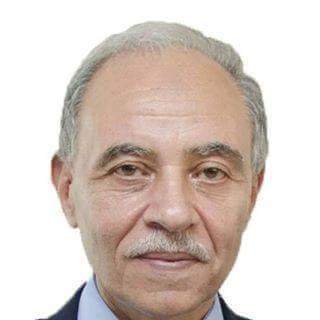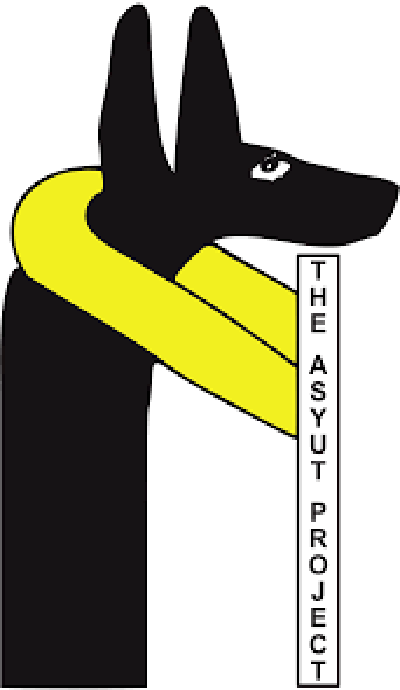Report of Fieldwork Season 2009 in the Necropolis of Asyut
Mahmoud El-Khadragy - Jochem Kahl
From 18th August to 15th October 2009 the Egyptian-German joint mission of Sohag University and the Johannes Gutenberg-Universität Mainz conducted its seventh season of fieldwork in the ancient necropolis of Asyut situated in the western mountains. In addition, the mission studied objects in the magazine at Shutb from 18th August to 15th October 2009.
Members of the mission were:
Prof. Dr. Mahmoud El-Khadragy, Sohag University, field director;
Prof. Dr. Jochem Kahl, Freie Universität of Berlin, field director;
Prof. Dr. Ursula Verhoeven, University of Mainz, project director;
Prof. Ahmed Ali El-Khatib, University of Sohag, botanist;
Assistant Prof. Dr. Mohamed Abdelrahiem, University of Sohag, Egyptologist;
Dr. Sameh Shafik, epigrapher;
Dr. Hesham Faheed Ahmed; Egyptologist;
Dr. Abd el-Naser Yasin; Islamic studies;
Dipl. Ing. Corinna Garbert, architect;
Cornelia Görlich, student of architecture;
Josephine Malur, BA, Egyptologist;
Josuah Pinke, BA, Egyptologist;
Dr. Ina Eichner, Byzantine archaeologist;
Thomas Beckh, M.A., Egyptologist;
Dr. Silvia Prell, Egyptologist;
Magdalena Patolla, M.A., anthropologist;
Mohamed Al-Shafey, Egyptologist;
Mohamed Helmi, Egyptologist;
Andrea Kilian, M.A., Egyptologist;
Barbara Reichenbächer, student of Egyptology;
Eva Gervers, student of Egyptology and anthropology;
Ammar Abu Bakr, draughtsman.
The accompanying inspectors were Mr. Adly Garas Matta, Madame Nadia Naguib and Mr. Ahmed Abd-Alrahim Abd-Almagid.
Accompanying restorers were Mr. Ahmed Abd el-Dayem and Mr. Helal Qeli Attalaa.
Fieldwork focused on Level 7 (Old Kingdom shafts) including Tomb N13.1 (temp. Mentuhotep II), Tomb V (First Intermediate Period), Tomb N11.1 (First Intermediate Period), the Northern Soldiers Tomb (H11.1), the Tomb of the Dogs (Ptolemaic-Roman Period), surveying Coptic material remains (Deir el-Azzam and Kom el-Shuqafa on the mountain plateau, Deir el-Meitin on level 5), documenting the architecture of Tomb I (12th Dynasty) and Tomb IV (First Intermediate Period), and the mapping of the necropolis.
In addition, objects were studied in the magazine at Shutb.
The mission made facsimiles of the decoration and inscriptions in Tomb I (Djefai-hapi I; Dynasty 12). In adddition facsimiles in Tomb N13.1 (Iti-ibi-iqer; First Intermediate Period/Dynasty 11) were collated.
Mapping of the necropolis (Fig. 1) continued focussing on surveying the Coptic remains on Gebel Asyut al-gharbi. Especially, Deir el-Meitin, Deir el Azzam and Kom el-Shuqafa were studied.
The Kom el-Shuqafa on the top of the Gebel Asyut covers an area of approximately 120 x 80 m. The area is densely covered by ceramic sherds. In some hollows, which are distributed among the Kom, the remains of mud-brick walls are visible. Therefore it is very likely that the Kom formerly was a little settlement which extended on the top of the Gebel. At some spots a very conspicuous concentration of amphora-sherds of the type “Egyptian A” has been observed.
Southwest of the Kom are situated three kilns which have been used for the production of bread or other foodstuff. The existence of Pharaonic, roman and late antique pottery points to a use of the settlement in these time periods, but the significant pottery around the three kilns show, that these have been used later, in the time between the 6th and the 7th century CE.
The monastery of Deir el-Azzam (Pl. 1) rises above the north-western part of the Gebel Asyut al-gharbi and is surrounded with graves on three sides. Schematic and imprecise ground plans of the monastery have been published by G. Maspero and W. De Bock[1], but they don’t correspond with those remains which are still visible today. Besides this the two authors mixed the point of the compass (North and South) in their plans. This makes the comparison with the still visible remains of the monastery much more complicated. A small apse, oriented to the east, could correspond to the remains of the church, which has been described by Maspero and De Bock. But of all the other buildings, which have been described by Maspero and De Bock, especially the tower and the surrounding walls, no remains are identifiable.
Only a few sherds have been recovered directly from the strongly eroded area of the monastery. In some cases the rock was uncovered. The main body of material comes from a heap of debris at the northern flank of the Gebel, below the monastery. An accurate assignment to a special room or building of the monastery is therefore not possible. The fine-ware from Assuan, which has been picked up there, dates from the 8th to the 10th, maybe even the 11th century AD. In addition, the highest concentration of glazed pottery from the Islamic period can be found in this area, which shows the use of the area beyond the 12th and 13th century AD. Scattered sherds of amphorae of the type „Late-Roman-Amphora 1“ (LR-1) make it possible, that the area has already been used in the 5th century AD.
The find-spots 10 – 17 are situated on a rocky terrace to the southeast of the monastery of Deir el-Azzam. In front of some of the rock-cut tombs of the Pharaonic period are preserved the remains of some architectural structures (Fig. 2). The examination shows clearly, that this area was used in the late antique period not for burials but for habitation. The ceramic material from these find-spots was mainly used for cooking and storage. In addition some sherds of an amphora of the „Egyptian Type A“ were picked up, a type which was in use from the 1st to the 5th century AD[2]. Some of the rare samples of fine-ware date to the 5th until the 8th century AD, maybe a little earlier[3].
In the southwestern part of Tomb V (Fig. 3) the surface was cleaned. Under a several metres high layer of limestone debris (caused by the collapsed ceiling, which broke down because of quarrying activities in the 19th century), an about 1 m high layer of burnt bones was found. In front of the false door (western wall) an unfinished and empty shaft (Pl. 2) was found under the bone layer.
The architecture of shaft 2 in Tomb IV (Fig. 4) was recorded. The shaft shows five side chambers.
Cleaning of Tomb N11.1 (Fig. 5) was finished. It can be used now completely as a magazine for the equipment of the mission after closing the gebel. Tomb N11.1 consists of 6 shafts (one of them is unfinished) and a row of three pillars (Pl. 3). The unfinished shaft and the two westernmost shafts were cleaned last season; this season the three easternmost shafts were cleaned. Some pottery from Late First Intermediate period/early Middle Kingdom was found.
Cleaning activities started in Tomb H11.1 (Pl. 4; Northern Soldiers Tomb). A relatively high amount of animal bones was found on the surface. In addition also some early Middle Kingdom vessels (e.g. Asyut SCA no. 175; Pl. 5) were found. Since the tomb's roof has been collapsed in earlier times, it is quite probable that the surface finds belong to the level, which was originally situated above Tomb H11.1. Cleaning of the surface revealed hitherto hidden parts of painted decoration on the northern wall.
Cleaning of Level 7 to the south (Pl. 6) brought some small Late Old Kingdom tombs to light. They consist of only one shaft or one small chamber and a shaft.
The Asyut Project focussed on examining the structure of the forecourt of Tomb N13.1: after this season the number of small structures (Fig. 6), which are known, increased from 67 (last season) to 80 (this season). Male and female adults as well as children were buried there. The shafts were disturbed. One of the disturbed shafts still showed parts of a layer of unburnt bricks covering its opening.
Roads, paths or steps, which could help to understand the ancient system of ways on level 7 of the necropolis, have not yet been found. Ancient quarrying activities in front of Tomb N13.1 destroyed possible hints for stairways or ramps.
The animal bone survey of the last season has given clear evidence that the already in the 19th century mentioned Tomb of the Dogs must be situated on level 4 close to Tomb IV in level 6. At the beginning of the 1990s, heavy rainfall overwhelmed this area with debris from higher levels. This season, cleaning of several meters of high debris brought to light the entrance to a room system of the Tomb of the Dogs. Only a small part of the outer side of the whole structure could be cleaned (Pl. 7). It became obvious that the original entrance is situated c. 20 meters lower in the Gebel Asyut al-gharbi. The entrance area could be located but work was not yet begun there.
The interior of the room system, which is at the moment accessible, is part of a gallery and filled with dog bones. Dog bones and other animal bones cover the floor of the corridor and inner rooms up to a height of several meters (the ground floor has not yet been reached). Because of tomb robbers’ activities, the condition of the preserved animal remains in the Tomb of the Dogs is very poor. Nevertheless one can already now distinguish different treatments of the dogs:
- The animals were macerated.
- Dog bones were wrapped in linen and buried as a bundle.
- Bones were treated with bitumen.
One still has to clarify whether these different kinds of treatment reflect chronological differences.
In the surface debris different finds were made, which promise to give more information about animal cult in ancient Asyut. Demotic ostraca from Ptolemaic Period are especially worth mentioning. They seem to give information about the organization of the cult.
But also the remains of a large brick wall were found in the surface debris. This wall might originally have belonged to the monastery Deir el-Meitin.
At the end of the season, the entrance to the gallery of the Tomb of the Dogs was protected by a wall and covered with debris.
The restorers Mr. Ahmed Abd-Aldayem Mohamed and Mr. Hellal Okeli Atalla cleaned wall paintings in Tomb I (Tomb of Djefai-hapi, 12th Dynasty). Due to their restoration work (Pl. 8) fragments of paintings and inscriptions in the inner hall could be studied and facsimiles could be made. In addition objects in the magazine at Shutb were restored, among others a wooden coffin head (Pl. 9), which was found in the Tomb of the Dogs area.
During the work in the magazine at Shutb, progress was made in studying and drawing small objects from the last seasons, especially basketry and ropes. A part of the fauna remains and Islamic pottery were also studied. 20 objects were registered by the SCA.
An international conference presenting the results of the last seven seasons of fieldwork at Gebel Asyut al-gharbi took place at Sohag University from 10th – 11th October.
Figures:
Fig. 1: Map of Gebel Asyut al-gharbi
Fig. 2: Find-spot 11 with architectural remains
Fig. 3: Tomb V (M11.1), ground plan
Fig. 4: Tomb IV (N12.2), ground plan
Fig. 5: Tomb N11.1, ground plan
Fig. 6: Level 7 around Tomb N13.1, ground plan
Pl. 1: Deir el Azzam
Pl. 2: Tomb V
Pl. 3: Tomb N11.1
Pl. 4: Tomb H11.1
Pl. 5: Asyut SCA no. 175
Pl. 6: Level 7 south of Tomb N13.1
Pl. 7: Tomb of Dogs
Pl. 8: Tomb I inner hall
Pl. 9: Wooden coffin-head
[1] G. Maspero, Les fouilles de Deir el Auzam, Annales du Service des Antiquités de l’Égypte 1, 1900, 111, Fig. 1 ; W. De Bock, Matériaux pour servir a l’archéologie de l’Égypte chrétienne (St. Petersburg 1901) 88, Fig. 100.
[2] D. Bailey, Excavations at el-Ashmunein, V, Pottery, Lamps and Glass of the Late Roman and Early Arab Periods, 1998, S. 125-129.
[3] Interesting is the stamp of a lion on the bottom of a bowl. Similar in style is the representation of a lion on a „Tonpunze“ from Elephantine, see: R. Gempeler, Elephantine X, Die Keramik römischer bis früharabischer Zeit, AV 43, 1992, Taf. 3,11.


